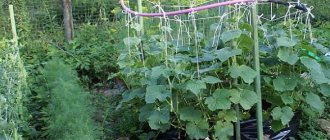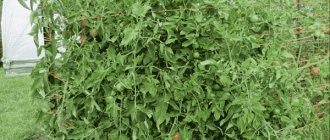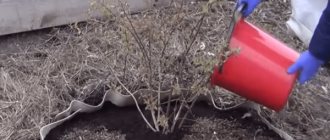Most gardeners and summer residents who grow different crops always set aside beds for tomatoes. This pattern is not surprising, since growing such a vegetable is quite interesting. There are different varieties of tomatoes - both low-growing and tall.
Preference is given to tall tomato crops, as they are capable of producing large tomatoes. Such plants, of course, need proper care, but the results will be excellent. Of particular importance in caring for seedlings is the procedure of tying up bushes. Gardeners know a special technology for properly tying tall tomatoes in open ground.
Why do you need to tie up tomatoes?
Experienced gardeners who have been growing tomatoes for many years know that gartering is an important event on which the quantity and quality of the harvest directly depends. The garter is especially important for medium-growing and tall varieties - their bushes grow several kilograms of fruit, under the weight of which the bushes break and die.
Why do you need to tie up tomatoes?
- unloading of the stem and branches - part of the weight of the fruit is transferred to the supports;
- protection of fruits from slugs;
- protection against diseases that are transmitted to plants through close contact with the ground;
- preventing fruit spoilage due to fungal attack;
- More sun penetrates to the fruits, they ripen faster;
- convenient to collect ripening fruits.
Methods for gartering tomatoes
As you can see, gartering tomatoes is still required in many cases. In this regard, the following *methods of gartering tomatoes* are distinguished. The most common method of staking tomatoes is on a metal or wooden stake. For this type of garter, you need to drive a peg near each tomato bush and tie the stem of the tomato bush to it using a rope.
Instead of rope, you can use a cord from old household appliances or bobbin tape; old nylon stockings can also be used for tying tomato bushes. You can also use synthetic old men's shirts as material for gartering a tomato.
In this case, you can use this material every year, but before the next seasonal garter it is recommended to disinfect the patches in order to eliminate possible spores of late blight or other tomato diseases.
Tomato gartering is done near the top of the stem; you need to wrap a piece or rope around the stem and peg several times, then tie it. When tying, it is not recommended to over-tighten the stem; this can lead to damage and death of the tomato bush. As the tomato bush grows in height, it is necessary to make additional garters, or move the existing garter higher.
Gartering tomatoes in a greenhouse is done using a different method. Metal posts with a diameter of at least five cm are installed at both edges of the tomato beds. Then these posts must be connected to each other with thick wire.
Gartering tomatoes in open ground can also be done using the described method. Next, each tomato bush is equipped with a tight rope, one end of which must be secured directly to the wire, and the other to the tomato bush. As the tomato plants grow, they remain upright thanks to the taut ropes.
Having considered the question of how to tie tomatoes, we can say that the procedure for tying tomatoes is simply necessary to obtain a high and high-quality harvest. Gartering tomatoes in a greenhouse is necessary to the same extent as in open ground. It must be remembered that for gartering tomatoes in different ways, you need to use only clean and disinfected materials.
Igor Serba, member of the editorial board of the online publication “AtmAgro. Agroindustrial Bulletin"
33,67
atmagro.ru
Rules for gartering tomatoes
There are several ways to garter tomatoes, differing in the materials and devices used. The event, regardless of method, is held according to the same rules.
Rules for gartering tomato bushes:
- The timing of the event must be respected. You need to choose the moment in time to prevent overloading the bushes.
- Supports or frames are installed in moist soil. This helps prevent soil from cracking, which can damage fine roots.
- The garter is carried out in stages: first the central stem is tied, and as soon as the fruits begin to form, the fruiting branches are tied up.
- A separate rule for tall varieties is that they must be tied up 4-6 days after transplanting the seedlings into the ground.
- Low-growing varieties are tied up after the first ovaries appear.
- The garter is made loose; it should not tighten the stem.
- The loop with which the bush is attached to the support is made in the form of the number 8.
- Tall bushes are first fastened under the lower brush, and as they grow, several more fastenings are made.
- Low-growing bushes are fastened in the middle part of the stem.
- Materials for gartering are used once, and at the end of the season they are collected and disposed of.
- Before gartering, the bushes are pruned. Stepchildren are side shoots growing in the axils of the leaves. They reduce the intensity of fruiting, so they must be removed (pinching).
- When tying up bushes, you need to leave free space between them and the supports in anticipation of further growth.
- The number of garters depends on the variety and can range from 2 to 4 times.
What to tie it to
The choice of garter method depends on the materials at hand, as well as financial capabilities. There are many ways to garter tomatoes, let’s consider them in order.
On the pegs
This is the most common way to garter tomatoes in open ground.
Pegs fit:
- wooden;
- metal;
- plastic.
Pegs are stuck into the soil at the base of the stem, and then the plant itself is tied to the support. The number of supports is one or two per bush.
The optimal length of the stake should exceed the maximum height of an adult tomato bush. Garter tapes are wrapped around the tomato stem, starting from the ground and moving up to the top of the plant.
Important! Before staking tomatoes, experienced gardeners recommend tearing off the lower leaves of the plants so that there is no additional contact of the bush with the ground.
On the trellises
Gardeners erect trellises by digging several supports in a row - usually tall slats or stakes. Horizontal ones are laid between the vertical supports. This is what the trellises look like in the photo:
Tomato bushes are attached to supports with garter material.
Some tomato growers believe that it is better to wrap the garter material around the plant clockwise.
This is due to the fact that the sun moves clockwise, and the tomatoes turn after it.
On a wire frame
This method of tying tomatoes is suitable for those who have few tomato bushes growing on their plot (due to the high cost of materials). It allows you to tie up tomatoes in the garden without stakes.
You can buy this frame ready-made or weave it yourself if you have wire. It looks like a cage with tomato bushes (usually one to three) planted inside it.
Important! When tying tomatoes, it is better not to tighten the garter strips tightly. It is also recommended to attach the bush in several places. This will eliminate the risk of damage to the plant.
To the chain link fence
Another way to garter tomatoes without sticks. It involves tying bushes to a fence made of metal or plastic mesh. The support grid is pulled over the stakes between the tomato rows.
Plants are attached to the mesh fence with garter material.
Important! Professional tomato growers do not recommend using the same garter material for several years in a row, since it gradually becomes a source of tomato diseases.
On hooks and chains
Another way of gartering. But more often it is used in polycarbonate greenhouses.
It consists of lowering a chain to a vertical support above the tomato bushes. The tomato bush is attached to the links of the chain on a garter, at the end of which a hook is installed.
As the plant grows, the hook is moved to higher rings of the chain.
The method can be adapted for use in open ground if the chain is vertically lowered from supports installed between growing tomato bushes.
Materials and accessories
When tying up tomatoes, it is important not only to follow the process technology, but also to choose the right materials with which to support the bushes in the air.
Tips for choosing garter material:
- It is prohibited to use wire, thin twine or fishing line as garter material. All this digs into the stems of the bushes, damaging and deforming them. You need materials 4-5 cm wide.
- It is forbidden to use last year's garter. It can retain pathogens of various diseases, which there is no need to transmit to new plants.
- Natural fabrics cannot be used. They tend to rot and harbor insects, fungi, and bacteria.
- The best option is a synthetic material with a low stiffness coefficient: nylon cord;
- leg-split;
- wide and thick rope;
- old nylon stockings.
Before use, the garter material must be disinfected - washed and boiled.
Along with garter materials, you will need support devices to which the bushes are tied to plastic and metal structures. It can be:
- stakes;
- grids;
- frames.
What to tie
To attach tomatoes to supports, it is better to use soft materials that will not injure the plant stem:
- strips of fabric;
- leg-split;
- rope;
- bulky knitting yarn;
- sewing braid;
- strips of nylon stockings or tights.
Attention! It is not advisable to use thin threads, fishing line or wire when tying plants. These materials will cut into the stems and harm the tomatoes.
Deadlines
Gartering begins when 8-10 true leaves appear and the stem in its lower part reaches a diameter of 1 cm. The timing of tying depends on the early maturity of the varieties.
The timing of the first garter depending on the early maturity group:
- early - 35-40 days after planting in the ground;
- medium - for 50-60 days;
- late - on the 70-80th day.
The number of subsequent garters will depend on the size of the bush and how quickly and vigorously it will grow. If the bush is low-growing and compact, one garter may be enough, and some varieties do without it at all.
Do I need to tie up tomatoes?
Gardeners have not yet found a single answer to this question - at least as regards tall and abundantly fruiting varieties. Some believe that the garter makes the life of the plant easier, others are sure that nature itself knows how to develop better. However, the latter do not take into account that the very fact of growing tomatoes in most regions of Russia is an artificial process in principle, and therefore the reasoning about what “nature knows best” is not very correct.
Gartering tomatoes, in fact, not only makes life easier for the plant, as we mentioned above, but also increases the likelihood of preserving the fruit. When fruits lie on the ground, they are more susceptible to attack by slugs and other pests.
In addition, tied tomatoes are easier to subject to the pinching procedure. During growth, shoots appear on the tomato bush, on which ovaries are also formed, however, they do not have time to ripen, and they take a fair amount of strength from the main plant. The procedure for cutting off these processes is called pinching.
Another argument in favor of tying up tomatoes is the ability to organize watering more correctly. Tomatoes love it when they are watered directly at the root; moisture getting on the ovary and leaves is undesirable. Of course, when the bushes are not tied up, it is simply impossible to water the plant at the root.
Tying tomatoes in open ground
In open ground, large producers and many simple gardeners try to grow tomato varieties that can grow without garter. They are also called super-determinate or growth-limited varieties. The disadvantage of such tomatoes is small yields.
Features of a garter in open ground:
- In vegetable gardens, you can use the same gartering methods as in greenhouses.
- If there are few bushes, it is advisable to use caps or wire frames. For hundreds of bushes, such methods are not suitable; trellises have to be arranged.
- The requirements for trellis structures in open ground are stricter than in greenhouses. In addition to the weight of the bushes, they have to withstand gusty winds, rain and other natural disasters.
- Trellis are installed for one year, since tomatoes are not recommended to be grown in one place. Because of this, few gardeners use the trellis garter method. There are, however, mobile versions, but their construction requires certain knowledge, skills and costs.
- Plastic nets are not suitable for garters. Tall bushes tear it up, but low bushes do not need it. The annual installation of a chain-link fence turns out to be even more difficult than the arrangement of trellises.
- For gardeners growing tomatoes in open ground, the most popular method remains gartering with individual stakes.
Tying methods
It is worth noting that gardening is developing every year. Breeders are constantly developing new varieties of vegetable crops. In practice, gardeners have tried different methods of tying. Feeding and pinching shrubs are important stages in growing tomato crops.
On the pegs
This is one of the most popular methods that will allow you to maintain the vertical position of the stems of tall tomatoes. To do this, you need to drive a peg into the ground next to the bush, and then carefully tie the plant stem to it. If necessary, the bush should be tied up in several places. The height of the pegs can be approximately 20 cm above the stem of the seedling.
You can tie the stems using any pieces of fabric. It is optimal to choose a synthetic material, since natural fabric will begin to rot, which will harm the plant. An indispensable material for tying is twine.
Important! Do not use stiff rope or wire for tying, as this can damage the stems and affect the development and growth of the bushes. Before the procedure, the tissue should be boiled to avoid infection with diseases and parasites.
In specialized stores you can purchase “clamps” that can be used to secure tomatoes. The tying should be done high. The tourniquet should not be tightened too tightly, otherwise the plants may die. As the tomato crop grows, the garter can be gradually moved upward.
On the trellis
If we are talking about the impressive size of a tomato plantation, then tying with pegs should not be used; the design will be inconvenient. It is optimal to use tying plants onto trellises. This will require a thin long beam or strong pegs. The stakes should be driven into different sides of the bed, and a wire should be stretched and secured between them. Plants must be attached directly to the wire. This method can be used in several variations:
- The wire is stretched between the beams at a height of approximately 2 meters. It is recommended to use long strings for this procedure. As the tomatoes grow, the stems will wrap around the twine.
- You should stretch rows of wire that are secured to stakes. Each individual bush should be tied to such a guy wire. In addition, you can pass the lashes between the horizontal strips as they grow. The result will be a kind of braided tomato network.
When choosing one of the options, it is worth remembering that you cannot tighten the ropes on the stems tightly. In addition, this method can be used to tie up individual fruits that will grow too heavy.
Watch the video! How to build a trellis for tall tomatoes. We tie up the tomatoes
Important! The structure on a long bed can be modified and made more durable. To do this, you will need to drive additional pegs between the two main ones. With this design, even strong winds will not be a hindrance.
Cages for vegetables
How to conveniently tie up shrubs using special cages? Summer residents often build special cages for bushes. Such structures will last for several seasons. A separate cage is made for each bush. Use rigid wire, from which identical circles should be formed. Next, the circles are fastened together; it is important to maintain the distance using a vertical stand. The result will be cylindrical cells.
Such structures should be installed on the bed on top of the tomato bushes. As the plants grow, staking should be done. If you don't have wire of the required thickness, you can make a cage out of wood. In addition, the structure can be wide so that it can cover several bushes. This method is more reliable than conventional stakes.
Caps
In order to tie up tomatoes planted in open ground, you can use special caps. Such caps are suitable for securing shoots of other crops. In order to make such a structure, you will need vine branches or wire. It is necessary to build a pyramid with transverse and main knitting in the shape of the cell. The caps are installed on the bed during the period of planting seedlings. The distance between plants should be approximately 1 meter. If the area of the site allows, the distance may be greater.
Today there are approximately 10 thousand different varieties of tomatoes. The largest tomatoes can grow and weigh up to 1.5 kg, and the smallest tomato has a diameter of 2 cm. Therefore, there is no exact answer to the question of what is way to tie up the bushes. The method of tying should be chosen based on the variety of tomatoes.
Mistakes when tying tomatoes
Many gardeners, without delving into the peculiarities of tomato agricultural technology, make mistakes when gartering them. As a result, the bushes suffer, yields drop, and the taste of the fruit deteriorates.
Typical mistakes when gartering tomatoes:
- The bushes are tied with inappropriate material . Too hard materials cause damage to the stem and shoots. Plants begin to wither and eventually die.
- They use last year's garters and do not disinfect them. As a result, young plants can be affected by pathogenic microbes.
- They tie the ropes lower than necessary, and do not change the garter as the bushes grow . When growing tall varieties, a one-time garter is not enough; it has to be repeated several times during the growing season.
- Install supports that do not correspond to the characteristics of the variety . So, for example, there is no point in tying a tall tomato to a low support, and vice versa.
- Wrap the stems and branches with tape/duct tape . This material secures branches only if they are wrapped tightly. But then the stem and shoots are deprived of the opportunity to grow in thickness. As a result, plant nutrition deteriorates and their productivity decreases.
The garter, for all its simplicity, can significantly affect the tomato yield. When choosing a method for gartering tomatoes, take into account the characteristics of the variety, method of cultivation, financial aspect and other circumstances.
0
0
Copy link
Garter accessories
When starting to garter a vegetable crop, you need to prepare the following equipment:
- wooden pegs;
- metal rods;
- wire;
- strong twine;
- dressing material.
It is the dressing material that will come into contact with the vegetable bushes. So when choosing it, make sure that it is strong and wide. You should not use wire, fishing line, or stringy thread, as they will cut into the stem as it grows, resulting in the death of the plant. An excellent option would be fabric cut into strips. Their width should be 3-4 cm. A sheet or linen is best suited for this.
Maybe
Tying in greenhouses
Growing tomatoes in greenhouses has a number of features. Since the amount of free space in the structure is limited, the following types of garter are used:
- Bow. A wire is stretched between the rows, to which each bush is fixed using the figure-of-eight method.
- Using clothespins. These are ready-made devices that can be purchased at any summer resident store. They allow you to fix the plant to any type of support.
Little tricks for gartering tomatoes in the garden
Not everyone can handle the labor involved in tying up tomato bushes. Therefore, summer residents use extraordinary materials and methods to optimize the process.
- Nylon cable ties or cable ties. Budget-friendly and profitable. One package (100 pieces) can be purchased for 25 rubles. It is recommended to use clamps multiple times, wash them first and disinfect them before reuse.
- Hand-made reusable garters from old bicycle or car inner tubes. This design looks like a thick strip with a slot on one side and a triangular head on the other. After wrapping the stem around the strip, all that remains is to insert the head into the slot.
- Dried thick stems of Jerusalem artichoke. An unusual but proven material, albeit disposable.
- Combining garter methods on one ridge. It is used when there is a shortage of a certain material or when growing varieties of different heights.
Let's sum it up
Do I need to tie up tomatoes in open ground? It all depends on the variety and height of the bush. Tying tomatoes is one of the important stages of caring for tall plants to obtain a good harvest.
Many methods have been invented for attaching stems to supports in open ground, and each tomato grower chooses the most convenient one for himself. Most often, when tying up bushes, they make do with improvised means - stakes, wooden slats and sticks, strips of old fabric or unnecessary nylon tights. Tomatoes in the garden are tied up without stakes, using a mesh or wire frame. When attaching bushes to supports, it is important not to use materials that can damage the plants (thin threads, fishing line or wire). The considered methods of tying are suitable not only for growing tomatoes in open ground, but also for a greenhouse.
0
How to determine the time of garter?
The timing of the procedure largely depends on the variety of tomatoes.
It is advisable to tie up tall specimens within a week after planting in a greenhouse or open ground.
In general, it is better to focus on the following rules:
- The procedure is carried out when the bush acquires 4-5 pairs of true leaves.
- The diameter of the stem must be at least 1 cm.
- Early ripening varieties are tied up 6-7 weeks after transplanting the seedlings.
- Mid-season - after 7-9 weeks.
- Late varieties and hybrids are tied up after 10-12 weeks.
ON A NOTE. Focus, first of all, on the condition and size of the bush. If the tomato has grown too quickly, garter it, do not wait until the due date.
When is it time to tie it up and why?
Gartering tomatoes is one of the mandatory agricultural practices that are carried out when growing this crop both in open beds and in greenhouses. Moreover, this needs to be done with almost all tomato varieties, preferably even with low-growing ones. For tall tomatoes, which grow up to 2 m and above, a garter is simply a must.
Tie the plants to supports when the tomatoes take root and grow a little, and not immediately after planting.
Carrying out this procedure allows you to solve the following problems:
- minimize the likelihood of stems breaking under load;
- provide them with normal air circulation, which will reduce the likelihood of fungal diseases;
- simplify the treatment of plants with fungicidal preparations;
- exclude contact of bushes with wet soil for the same purpose;
- simplify important plant care work: watering, weeding, loosening, mulching;
- increase the illumination of plants and developing tomatoes and thereby accelerate their ripening;
- make it easier to harvest tomatoes from the bushes when they ripen.
Thus, tying tomatoes is carried out in order to preserve the health of the bushes as much as possible and make caring for them easier.











